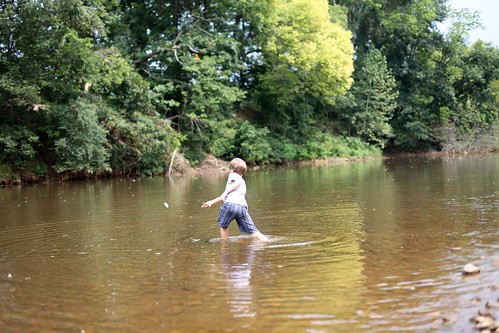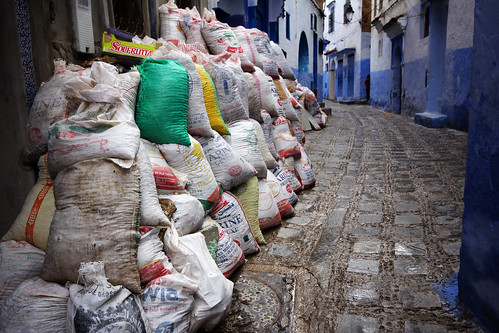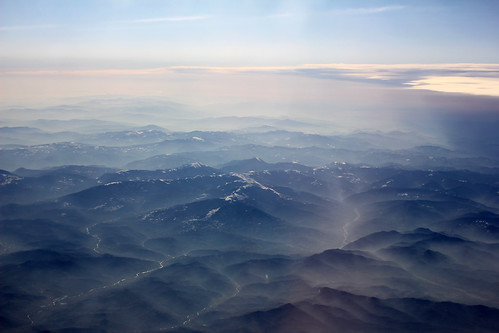Although my topic is probably the most macabre of our class’s articles, I believe writing and publishing it on the Boise Wiki is a service to fellow Boiseans. There are too many extravagant myths surrounding what happened at 805 Linden and I want people to be able to access the truth as easily as they can access those myths. I first encountered the “Murder House” stories as a sophomore in college, soon after moving to Boise, by one of my friends. I love mysteries and took on the challenge of uncovering the truth by first speaking with an old boss of mine, a retired police officer who worked the case. Ever since then I have been rather interested in sharing the truth of the “Murder House” with other Boiseans. Given the task of writing an article for the Boise Wiki, I thought this writing on this subject would make a perfect piece.
Since I could not really cite my discussions with my old boss, I first searched for Idaho Statesman articles written soon after the actual murder took place. Alas, I could not find any articles on the online Statesman database (offered through Albertson’s Library) and did not want to spend hours scanning through microfilm. After some more in-depth online searches I was able to find a few good sources—a more recent online article by KATU (channel 2 news) and the original court document related to Daniel Rogers case (the murderer). These two digital/digitized documents offered the facts I needed to write a truthful account of the murder that took place at 805 Linden.
As I have explained, I wrote my article using facts about the murder, and I hope that my accompanying Wiki post remains factual. I would love to see my article grow, with fellow writers posting more photos and expanding the account I have given. However, as with any editable online article, I am afraid that others may not be as concerned with the truth as I am. I would hate to see my article become one of the extravagant urban legends that already occupy much of the online space pertaining to this murder case. Hopefully fellow writers will consider their sources before editing my article, and hopefully any personal future editing will be simple enough so that I can manage the factualness of my article. Further, writing about such gruesome events as the murder at 805 Linden in an online Wiki format will most likely bring outsiders (foreigners to Boise and the surrounding area) who enjoy reading and elaborating on murder stories. Hopefully, since my sources come from websites with open accessibility, those foreign readers—and possibly writers—will take the time to access similar (factual) sources.
In order to create an interesting, but concise, Wiki article I had to account for only the most important details of my subject, which took some time during editing. For future Wiki contributors I would advise that editing an article before posting it is probably the most important step!
Boise Wiki Article – Reflection
Boise Wiki Article – Linden Murder House
If you have lived in Boise, especially southeast Boise, for a considerable amount of time you have most likely heard of the “Murder House”. Linden Street in southeast Boise, off the I-84 exit 54, is mostly a beautiful tree-lined street with well-kept homes—except for the house at the corner of Linden and Leadville. The house, a large craftsman style built in 1910, is the subject of many grandiose urban legends. There are legends of a crazed murderer who killed and dismembered numerous people in the house. A myth of the house being a fraternity house for Boise State University, with fraternity members telling of disembodied blood dripping from the basement walls. Also, a ghost story of a female apparition in 19th century clothes staring out the window at night. There is no evidence that 805 Linden was ever used by Boise State University as a fraternity house. The ghost story is a matter of personal belief, but the first rumor mentioned does have some truth to it.
Regardless of the rumors, the truth of what happened at 805 Linden Street is probably one of Boise’s most grotesque murders. Court documents state that on the night of June 30, 1987 an altercation broke out between three men: Preston Murr, Daron Cox, and Daniel Rodgers—the owner of 805 Linden. Preston Murr was shot in the shoulder as a result of the altercation. Attempting to flee, Murr ran to nearby homes and pleaded at the doors for help, but before anyone opened their door Rogers and Cox retrieved Murr and dragged him back into Rogers’s house. Once inside, Murr was fatally shot by a bullet to the brain. Soon after the shooting a nearby neighbor—an owner of a house Murr ran to for help—phoned police and reported the suspicious activity, however the police did not respond promptly and the neighbor went to bed.
Having murdered Murr, Rogers and Cox dismembered his body and placed the pieces into plastic bags. The bags were then placed into the trunk of a car and Rogers and Cox drove to Brownlee Reservoir, near Weiser, Idaho, to dump the body parts. The remaining evidence—gloves and the plastic bags—was thrown into a dumpster behind a Meridian, Idaho convenience store.
In the morning police responded—after a second call by the concerned neighbor—and discovered bloodstains on the street and several neighboring doors. Police then attempted to contact residents inside 805 Linden, but after no response they received a search warrant and discovered the crime scene. Cox and Rogers were apprehended and charged with murder. After complying with police and giving a detailed account of the incident, Cox was given a lesser sentence—accomplice to murder—of which he served six years. Rogers, being found guilty of murder, is currently serving a fixed life sentence at the Idaho Correctional Center; he was denied parole most recently in 2005.
So, Rogers is not a crazed killer who chopped up numerous victims in his basement. Blood does not spontaneously drip from the walls inside the house. And the accounts of a ghostly woman in the front window are unverifiable. It seems that this house—despite extravagant urban legends—is just the house at 805 Linden, where one of Boise’s most gruesome murders occurred in the summer of 1987.
San Francisco Earthquake Tycoon
Game Introudction:
Video from perspective of main character (player) showing life as it probably was two minutes before the quake, viewing San Francisco from a window inside a building overlooking Market Street. At two minutes the quake hits and immediately after the first shock the main character (so far directed by the game, real player is just watching this happen) works his way down to the lobby and exits through large double doors onto the street. Once the doors open gameplay begins and a voice-over story (narrated by Morgan Freeman) explains that you (the player) has just survived the San Francisco Earthquake of 1906 and it is up to you to rebuild the city from the ruins.
The object of the game (goal) is to reconstruct the city in the correct order, trying to prevent obstacles. Obstacles would depend based on which buildings/areas the player choose to construct and in which order the player constructs them. For instance, if the player constructs the market before the police station, looters might destroy the market because there is no police force to control the city. The game would be similar to Sim City, only it would follow a sequential order that is driven by the historical record.
By Courtney, Jon, Carl, Dan.
The United Territories of the Western Hemisphere
Five Card Story: How Alaska and Hawaii became An Independent Nation
a Five Card Flickr story created by Coutney and Nicole

flickr photo by bionicteaching

flickr photo by Serenae

flickr photo by Serenae

flickr photo by Rachel Smith

flickr photo by Serenae
Deep in the bayou of Louisiana a young boy, Sam-Tom-Bill (named so because his three grandfathers threatened to feed him to the gators unless he shared each of their names) fished for guppies in the village swamp. He wanted to add some flavor to his mama’s fermented gumbo pizza. Little did he know, the swamp guppies fed on the by-product of PollutionEx Oil’s crude waste, transforming them into mutant zombie guppies. Nonetheless, Sam-Tom-Bill ate his guppie side dish and delighted in every bite. As the mutant guppies made a stew in his stomach the disease quickly spread through his veins, mutating his blood cells and transforming him into a flesh acting human zombie. It took only a matter of weeks for the entire village to become infected and only three months for the state of Louisiana to be populated by the living dead. In an attempt to save themselves, the western United States dammed the Mississippi river, causing a great sea to divide east and west. But because of the unique guppie-human zombie mutation, the zombies easily swam the divide. By the end of the year the entire lower forty-eight became a wasteland of fermenting guppie-human zombies and Alaska and Hawaii began anew as the United, yet separated by thousands of miles of ocean, Territories of the Western Hemisphere.
Interview with Dr. Julia Flanders
For my digital humanist interview I spoke with Dr. Julia Flanders, director of the Women Writers Project and part of the Center for Digital Scholarship at the Brown University Library. First I would like to mention what a delightful interviewee she is! Dr. Flanders responded to my initial email promptly and was very friendly and casual throughout our Skype conversation, which helped lower my nerves about interviewing a fancy digital humanist! The interview quickly evolved into an enlightening conversation about digital humanities and the opportunities within the field.
Dr. Flanders revealed to me that she entered into the digital humanities by “accident”. As a graduate student at Brown she was presented with an opportunity to work on the Women Writers Project, a project taking the writings of pre-Victorian women “out of the archives” and making them accessible (digitally) to a wider audience. It was through her work on this project, which she now oversees, that she entered into the realm of digital humanities. She enjoys the project—moreover the digital aspect of it—because of the careful consideration and questions on editing it has raised; the question of how to edit early modern women’s writings for a digital space intrigues her and drives her work in the field.
One aspect of her career that she is particularly grateful for is the relaxed collegial atmosphere she feels is the essence of the digital humanities. She finds the work more enjoyable than traditional academia. A comment of hers that really stuck with me is when she stated,
“In my professional profile I do everything from grant writing and technical work, to teaching and serving on committees and serving on standards bodies and editing journals and all kinds of things. It’s very much a mix of things that are interesting that all kind of hang together and give me autonomy. If I want a different balance of these things in my career I can find it (within digital humanities).”
The picture she painted of her career as a digital humanist inspired me and made me hopeful that a similar career—although more along the lines of History than English—may be possible for me.
As far as any training or education required of her to enter the digital humanities, I got the sense that she was on the horizon of the field when she began working in it (around 1992). Therefore, she had no guideline or course of study required of her as there is today. She did mention that in order to get the position she has she did have to have a certain set of skills, for her it is text encrypting as well as a broad knowledge of traditional humanities. However, she said these skills could be different depending on what kind of digital humanities a person is interested in working in. For example, someone may need to learn data modeling versus text encrypting for a specific career, it just depends on what type of digital discipline he or she is interested in pursuing.
An important question for me was whether or not she experienced getting wrapped up in the “digital-ness” of the field and losing sight of the traditional humanities side of it. She answered with a confident “no”, stating that she felt the two (digital technology and humanities) really synced together well. The only problem she has had in her field is finding enough hours in the day to do her work! She also stated that the most interesting questions posed in her field are those that align with the more traditional humanities side, and that digital technology offers help in answering them.
Overall I got the sense that Dr. Flanders truly loves her career in digital humanities, as a profession and a discipline. As I stated above, she gave me inspiration and made me hopeful of my (possible) future in digital history!
9/17 In-Class Exercise: Health Insurance
Courtney G., Nicole B., Corey C.
1. http://www.census.gov/hhes/www/hlthins/data/incpovhlth/2011/Table7.pdf
2. Some questions an historian might ask about this data:
How might this data compare to similar data from past presidential terms (i.e., H.W. Bush, Clinton, Bush II, Obama)?
Are previous data sets, of similar content, organized into different categories than this one? Why?
Can this data be broken down geographically to show uninsured populations by national region, individual states, cities, rural areas, etc.? If so, what are the histories of those regions/neighborhoods?
3. Taking the hard numbers, an historian can create several different visualizations according to how they want the data interpreted (i.e., bar graph, pie chart, geographical map with references, etc.).
4. In order to understand the demographics of healthcare, especially those directly preceding the Affordable Care Act, an historian may correlate the uninsured with other factors, such as: disease/outbreak demographics, income, race/ethnicity, occupation, etc.